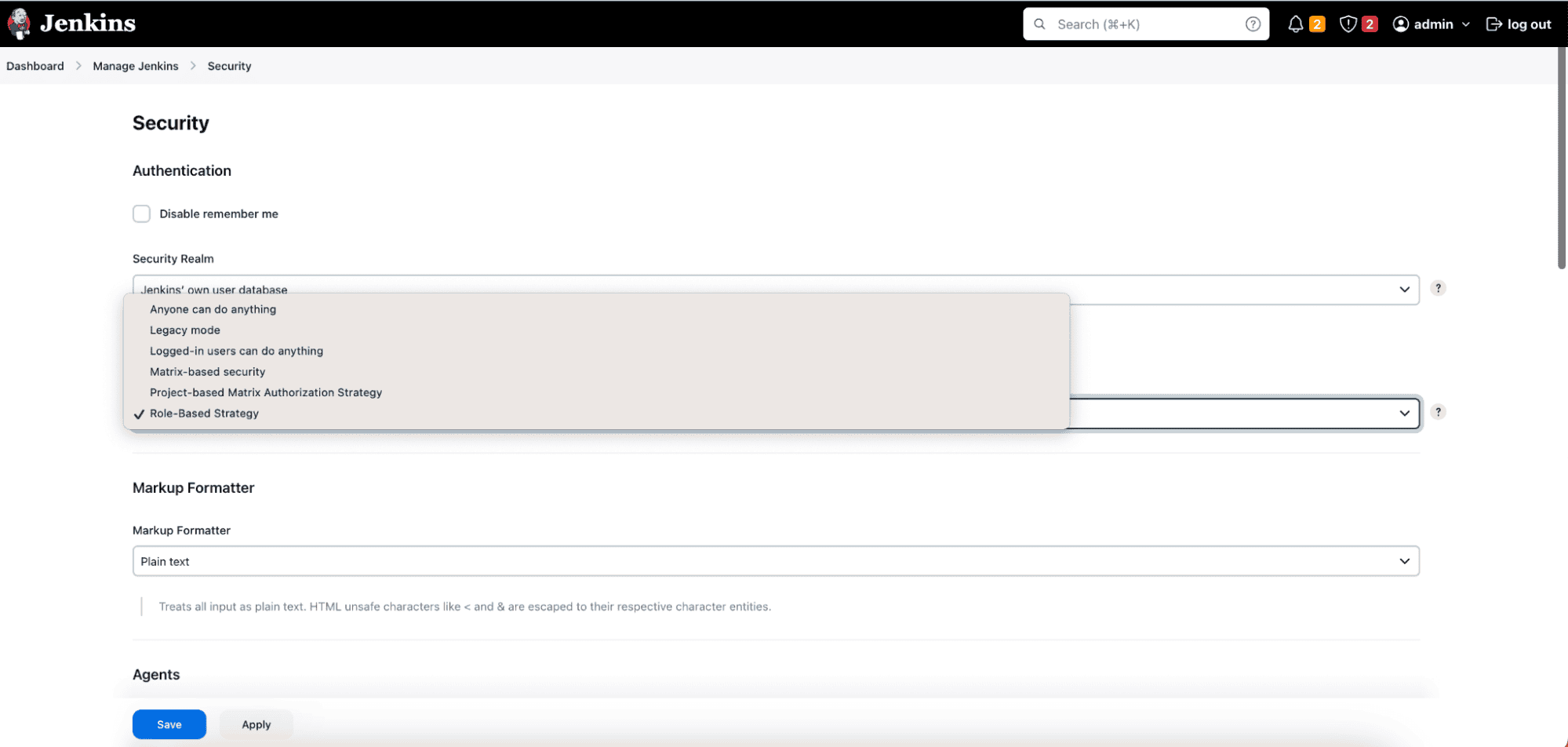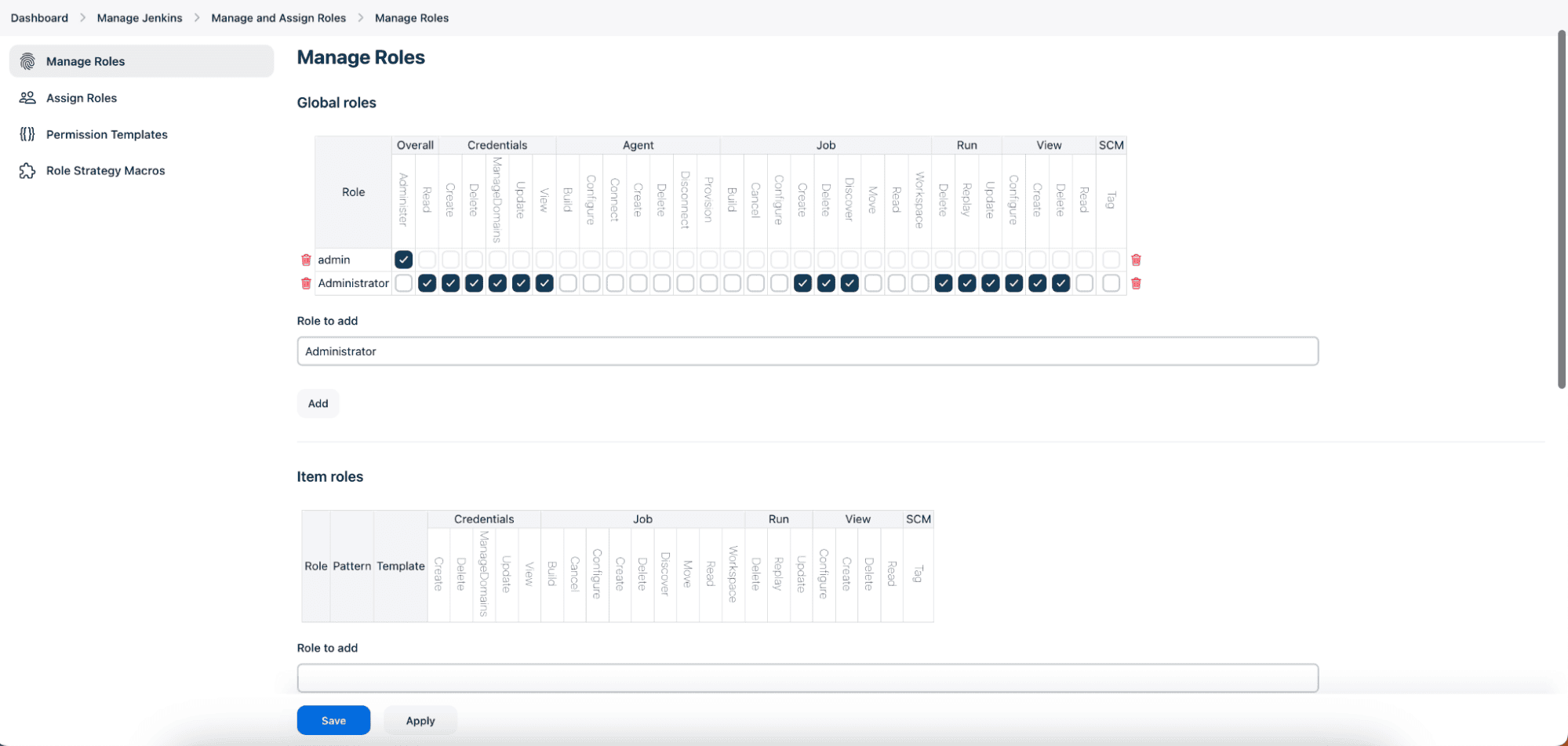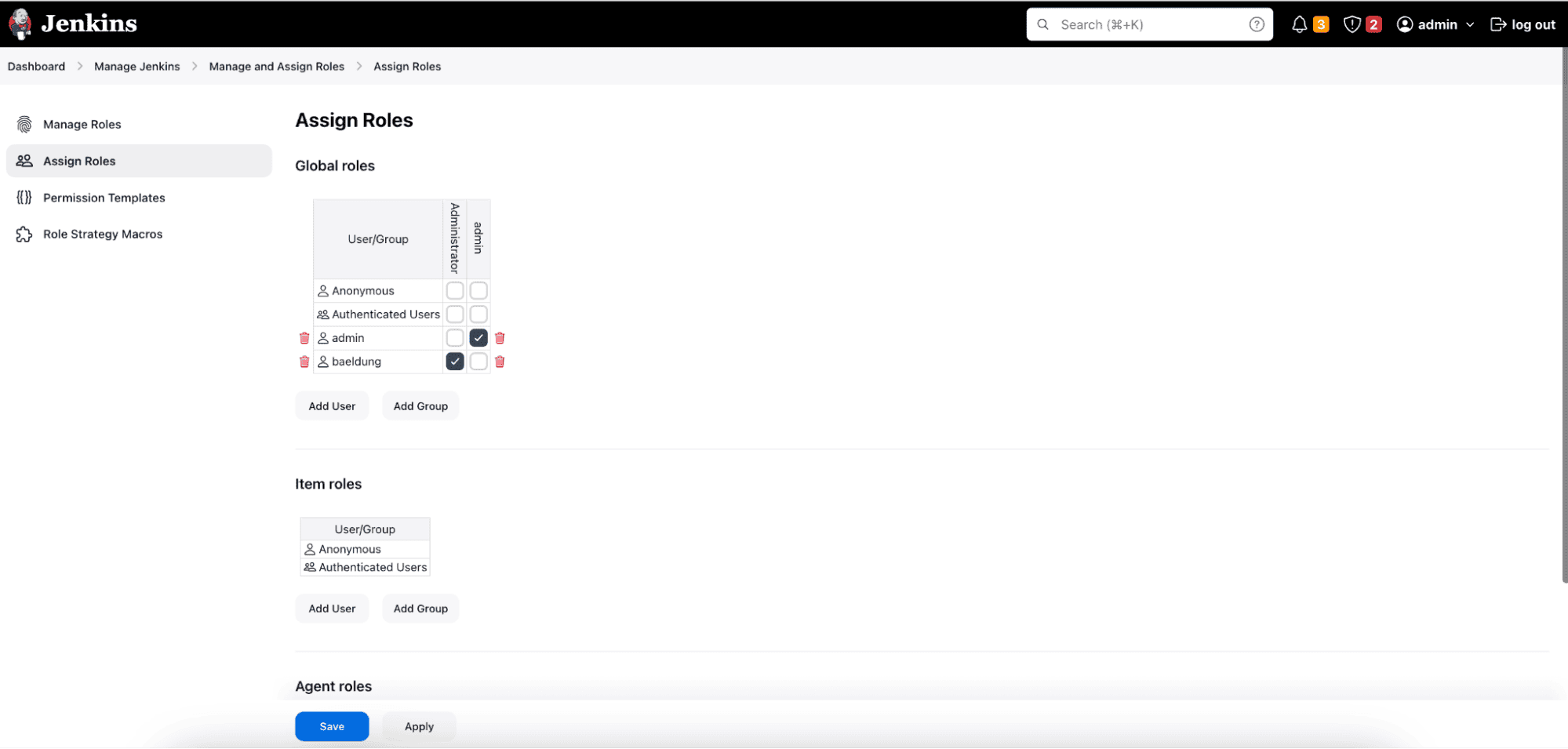Learn through the super-clean Baeldung Pro experience:
>> Membership and Baeldung Pro.
No ads, dark-mode and 6 months free of IntelliJ Idea Ultimate to start with.
Last updated: May 16, 2024
Managing Jenkins user access in a complex development environment can be challenging. Role-Based Access Control (RBAC) provides a granular approach to assigning permissions, ensuring that users have access only to the resources and actions they need. By configuring RBAC, we enforce security policies effectively while maintaining flexibility in the development processes.
In this tutorial, we’ll look into various ways to configure RBAC for Jenkins users.
RBAC is a security strategy to regulate access based on the predefined roles of a user. Each role encompasses a set of permissions that dictates all the actions a user can perform within the system.
Let’s first install the Role-based Authorization Strategy Plugin on Jenkins:
After the Jenkins server is restarted, we’re ready to use the Role-based Authorization Strategy plugin.
Global security and global roles help to establish a robust access control framework within Jenkins. This ensures the confidentiality, integrity, and availability of resources to different users.
The global security settings serve as the foundation for controlling access to Jenkins at an overarching level. By configuring global security, administrators can enforce authentication mechanisms, such as user accounts and passwords, LDAP integration, or single sign-on solutions, to verify a user’s identity before granting access.
Let’s look at the steps to define global security:

So far, we’ve configured the global security. Let’s configure global roles:

Now that we’ve created global roles for various types of users, let’s assign these roles to a specific user:

Once roles are defined and assigned, it’s essential to test user access to ensure that permissions are applied correctly. To do that, we’ll log in as different users with assigned roles and verify that they can perform the expected actions based on the permissions assigned.
The Matrix-based security method in Jenkins allows administrators to define access control permissions using a matrix-like grid interface. To demonstrate, let’s look at how to configure Matrix-based security.

Note that the “Legacy mode” option is disabled to use the Matrix-based security method exclusively.
After enabling Matrix-based security, we’ll see a matrix grid interface where we can define permissions:
Again, log in with different user accounts or simulate user actions to verify that permissions are enforced correctly.
In this article, we configured Role-Based Access Control (RBAC) in Jenkins. It’s essential for maintaining a secure and efficient development environment. By defining roles, assigning permissions, and regularly reviewing access controls, we can effectively manage user access in Jenkins and mitigate the risk of unauthorized actions.